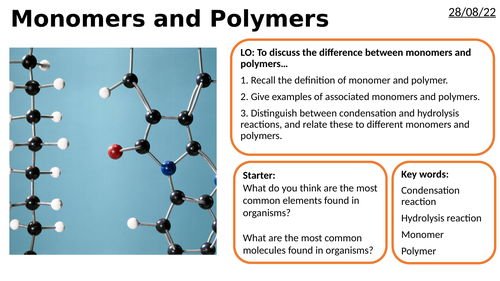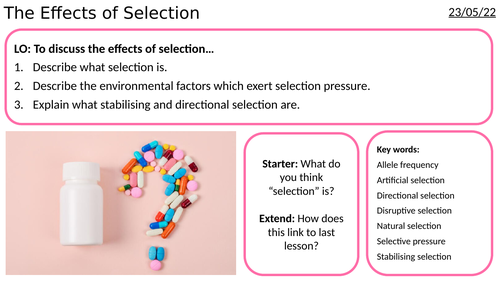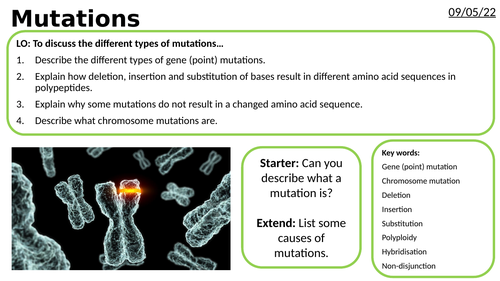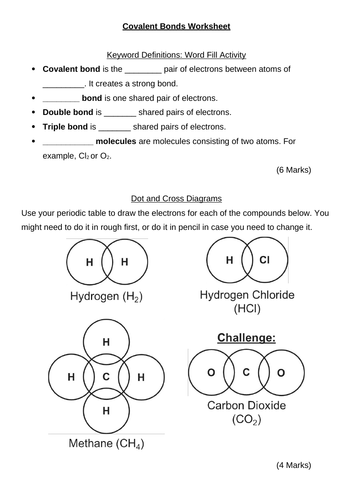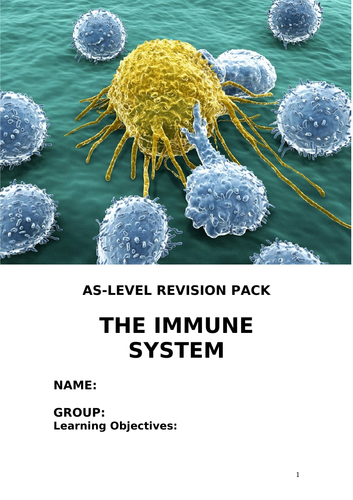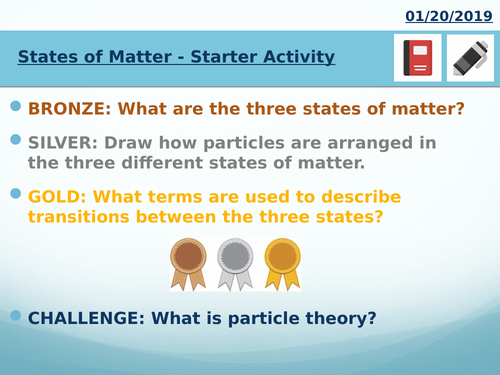66Uploads
17k+Views
13k+Downloads
All resources

Editable Teacher Timetable Boho Rainbow Dalmatian Spot
Editable Teacher Timetable Boho Rainbow Dalmatian Spot.

AS/A2-Level AQA Biology Monomers and Polymers Full Lesson
A full lesson on Monomers and Polymers, covering the following LOs…
Recall the definition of monomer and polymer.
Give examples of associated monomers and polymers.
Distinguish between condensation and hydrolysis reactions, and relate these to different monomers and polymers.
Lesson includes starter task, recall questions (and answers), plenary (multiple choice questions), and also practice exam questions (and mark scheme).

AS/A2-Level AQA Biology RP6 Investigating Selection Aseptic Technique Antibiotics Bacterial Growth
A PowerPoint on “Investigating Selection” to accompany the Required Practical on Antibiotics & Bacterial Growth (Aseptic Technique), covering the following LO…
Be able to use aseptic techniques to investigate the effect of antimicrobial substances on microbial growth (RP6).
Lesson includes starter task, plenary, home learning task (practice exam questions and mark scheme), and also a student practical sheet (with equipment list, risk assessment, method, extension questions, and teacher marking criteria).
Please check out my other AS/A-Level AQA Biology resources for this topic :)

AS/A2-Level AQA Biology The Effects of Selection Full Lesson
A full 60 minute lesson on The Effects of Selection, covering the following LOs…
Describe what selection is.
Describe the environmental factors which exert selection pressure.
Explain what stabilising and directional selection are.
Lesson includes starter task, summary questions (and answers), plenary, and also a homelearning task with practice exam questions (and mark scheme).

AS/A2-Level AQA Biology Genetic Diversity and Adaptation Full Lesson
A full 60 minute lesson on Genetic Diversity and Adaptation, covering the following LOs…
Explain why organisms are different from one another.
Describe what factors influence genetic diversity.
Explain how reproductive success affects allele frequency within a gene pool.
Explain how genetic diversity enables natural selection.
Lesson includes starter task, summary questions (and answers), plenary, and also a homelearning task with practice exam questions (and mark scheme).

AS/A2-Level AQA Biology Meiosis and Genetic Variation Full Lesson
A full 60 minute lesson on Meiosis, covering the following LOs…
Describe why meiosis is necessary.
Describe the process of meiosis.
Explain how meiosis creates genetic variation.
Lesson includes starter task, comprehension task, meiosis diagram sheet, summary questions (and answers), plenary, and also a homelearning task with practice exam questions (and mark scheme).

AS/A2-Level AQA Biology Gene and Chromosome Mutations Full Lesson
A full 60 minute lesson on Mutations, covering the following LOs…
Describe the different types of gene (point) mutations.
Explain how deletion, insertion and substitution of bases result in different amino acid sequences in polypeptides.
Explain why some mutations do not result in a changed amino acid sequence.
Describe what chromosome mutations are.
Lesson includes starter task, summary questions (and answers), plenary, and also a homelearning task with practice exam questions (and mark scheme).

KS4 GCSE 9-1 Science Chemistry Covalent Bonds Bonding Worksheet
A worksheet about covalent bonds, with word fill and dot-cross diagram activities.
Bundle

AS/A2 Level (OCR) Year 12/13 Immune System Immunity Revision/Self-Learning Pack (Home Learning Resource)
AS/A2 Level Year 12/13 Immune System Immunity Revision/Self-Learning Pack (Home learning resource)
Bundle contains…
AS/A2 Level Year 12/13 Immune System Immunity PowerPoint Presentation
AS/A2 Level Year 12/13 Immune System Immunity Revision Booklet
Students can use the PowerPoint Presentation to work their way through the Revision booklet activities and practice questions (up to the Section on “Cell signaling and the immune response”).
After this, you should encourage your students to use a variety of resources to research the answers to the last few sections of the booklet themselves.
Perfect for self/home-learning and/or revision of a particularly tricky topic.
Made for OCR, but can be adapted to suit different exam boards.
PRICE HAS BEEN REDUCED SINCE REVIEW :)

iGCSE Science: Reliability, Accuracy, and Validity Lesson Pack - Evaluating Experimental Data
iGCSE Science: Reliability, Accuracy, and Validity Lesson Pack- Evaluating Experimental Data
Lesson pack designed to help students understand the difference between reliability, accuracy and validity when evaluating experimental data.
Created for iGCSE, but can be easily adapted to suit other exam boards.
Lesson consists of…
Differentiated learning objectives.
RAG starter questions with extension activity, key word handouts, and answers.
Accurate vs. reliable dartboard activity with worksheets.
BIG PHARMA Bingo activity, with bingo statements and 15 bingo cards.
“Would I lie to you?” plenary.
Works really well for Year 9, 10 or 11.

AS/A2 Level Year 12/13 Immune System Immunity Full Lesson Presentation
Presentation covering the following information…
LO1) Describe the physical and chemical (non-specific) defences against pathogens in animals, including the skin, blood clotting, wound repair, inflammation, expulsive reflexes and mucous membranes.
LO2) Describe the structure and mode of action of phagocytes in the non-specific (innate) immune response, including neutrophils and antigen-presenting cells and the roles of cytokines, opsonins, phagosomes and lysosomes.
LO3) Describe the structure, different roles and modes of action of T lymphocytes in the specific (adaptive) immune response, including clonal selection and clonal expansion, T helper cells, T killer cells, T regulatory cells and memory cells.
LO4) Describe the structure, different roles and modes of action of B lymphocytes in the specific (adaptive) immune response, including plasma cells and memory cells.
LO5) Explain the significance of cell signaling, with reference to interleukins.
To accompany my “AS Immune System” Student Revision Booklet Pack (see other resources).

GCSE 9-1 Science Biology Nervous System Neurone Voluntary Involuntary Actions Reflex Arc Full Lesson
Full lesson on voluntary vs involuntary reactions, 3 different types of neurones (sensory, relay and motor), and reflex arcs.

Year 8/9 KS3/KS4 Chemistry Combustion Burning Fuels Full Lesson
Full KS3 (Year 8) lesson on combustion, including differentiated starter and plenary.
Covers the following LOs…
LO) To describe the differences between complete and incomplete combustion.
State the products of complete and incomplete combustion.
Describe the problems associated with the products of incomplete combustion.
Construct word and symbol equations for the complete combustion of simple hydrocarbons.

AS/A2 Level Year 12/13 Immune System Immunity Revision Booklet Pack
Revision pack for students to fill out (including exam tips and practice questions), covering the following topics on the immune system…
LO1) Describe the physical and chemical (non-specific) defences against pathogens in animals, including the skin, blood clotting, wound repair, inflammation, expulsive reflexes and mucous membranes.
LO2) Describe the structure and mode of action of phagocytes in the non-specific (innate) immune response, including neutrophils and antigen-presenting cells and the roles of cytokines, opsonins, phagosomes and lysosomes.
LO3) Describe the structure, different roles and modes of action of T lymphocytes in the specific (adaptive) immune response, including clonal selection and clonal expansion, T helper cells, T killer cells, T regulatory cells and memory cells.
LO4) Describe the structure, different roles and modes of action of B lymphocytes in the specific (adaptive) immune response, including plasma cells and memory cells.
LO5) Explain the significance of cell signaling, with reference to interleukins.
LO6) Examine and draw cells observed in blood smears.
LO7) Describe the structure and functions of antibodies.
LO8) Describe the actions of agglutinins and anti-toxins.
LO9) Describe the difference between primary and secondary immune responses, including the roles of T memory and B memory cells.
LO10) Describe the differences between active and passive immunity, and between natural and artificial immunity, and state examples of each.
LO11) Describe what autoimmunity is, and give examples.
LO12) Explain the main principles of vaccination and the role of vaccination programmes in the prevention of epidemics.

GCSE 9-1 Biology Science Transpiration Full Lesson
Full lesson with differentiated starter, challenge questions, quick check true or false questions, and 3-2-1 pyramid plenary.

KS3/KS4 Year 8 Science Chemistry Chemical reactions and physical changes Full lesson
Full lesson with differentiated starter activity, learning objectives, and quick check true or false questions.

KS3/KS4 Year 8 Science Chemistry Elements Compounds and Mixtures Full Lesson
Full lesson with learning objectives and guess who activity.

KS3/KS4 Year 8 Chemistry Science Pressure Particles Full Lesson
Full lesson with learning objectives and quick check true or false questions.

KS3/KS4 Year 8 Science Chemistry Diffusion Particles Full Lesson
Full lesson with differentiated starter activity and quick check true or false questions.

KS3/KS4 Chemistry Science States of Matter Full Lesson with worksheet and answers
Full lesson with differentiated starter questions, quick check true or false questions, and worksheet with answers.


